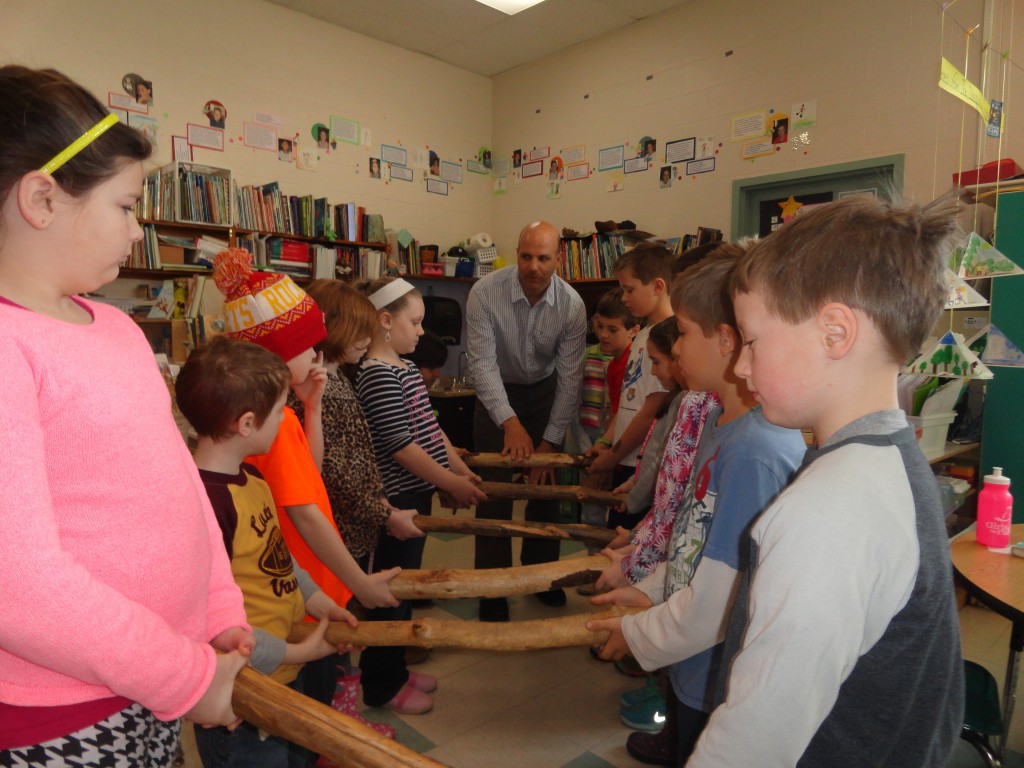 It is hard to believe that nearly two thirds of this school year has passed. Next week report cards will be sent to you via email at the end of the week. It is good to stop and take notice of accomplishments and to see if we are attending to the goals that have been set earlier in the year. Third grade is the year where most children are developmentally able to accept responsibility for their own learning and learning behaviors. They realize they are making choices to focus and accept responsibility for their own learning.
It is hard to believe that nearly two thirds of this school year has passed. Next week report cards will be sent to you via email at the end of the week. It is good to stop and take notice of accomplishments and to see if we are attending to the goals that have been set earlier in the year. Third grade is the year where most children are developmentally able to accept responsibility for their own learning and learning behaviors. They realize they are making choices to focus and accept responsibility for their own learning.
SEL – Responsibility for Self and Others
 This week our social emotional learning focus has been taking responsibility for self-management. Building on author, Tim Green’s, message last Friday of always doing your best and being kind, we’ve revisited books about including everyone. Each Kindness by Jacqueline Woodson sparked conversation about regret and learning from mistakes. We reread Don’t Laugh At Me and explored the message of Horace and Morris, but Mostly Delores and wondered why sometimes we make clubs that keep others out. It is easy to notice how to be responsible when talking about book characters. We are working to notice how we can each be responsible for ourselves in our everyday interactions. We’ve been exploring way to be mindful and to take that extra second to reflect rather than react. “Is it the right thing, at the right time, for me and the people I am with?” I can see many of the children doing just that and I am proud of them. They are catching themselves at chatting, or making a distracting comment during a lesson or noticing when they’ve spent more time finding a place to read than reading.
This week our social emotional learning focus has been taking responsibility for self-management. Building on author, Tim Green’s, message last Friday of always doing your best and being kind, we’ve revisited books about including everyone. Each Kindness by Jacqueline Woodson sparked conversation about regret and learning from mistakes. We reread Don’t Laugh At Me and explored the message of Horace and Morris, but Mostly Delores and wondered why sometimes we make clubs that keep others out. It is easy to notice how to be responsible when talking about book characters. We are working to notice how we can each be responsible for ourselves in our everyday interactions. We’ve been exploring way to be mindful and to take that extra second to reflect rather than react. “Is it the right thing, at the right time, for me and the people I am with?” I can see many of the children doing just that and I am proud of them. They are catching themselves at chatting, or making a distracting comment during a lesson or noticing when they’ve spent more time finding a place to read than reading.

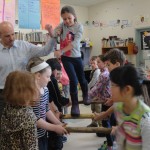
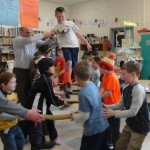 This week our challenge with Mr. Caron required focused teamwork and true awareness of self-control and self-management. The class rose to the occasion – everyone was able to complete the challenge. There was a real sense of pride and accomplishment in the room because everyone had made choices to stay serious and to care for each other as they walked across the sticks held as a ladder in the air.
This week our challenge with Mr. Caron required focused teamwork and true awareness of self-control and self-management. The class rose to the occasion – everyone was able to complete the challenge. There was a real sense of pride and accomplishment in the room because everyone had made choices to stay serious and to care for each other as they walked across the sticks held as a ladder in the air.
Place Value – Problem Solving
For the past eight weeks we’ve been exploring efficient ways to solve problems and working with amounts up through hundred thousands. These are amounts that are challenging to visualize but we’ve learned how to keep the amounts organized in our thinking. You can see from your child’s work that he or she is working to solve problems as efficiently as possible. All through this process we have been creating our own math land. We built house with base ten blocks and then found their value in hundreds, tens and ones. We also created ourselves and found our personal number by finding the total of our birth date, age, address, phone number and family size. That was an adding challenge to be sure.
 We complete our third round of fact checks. We’ve not been focusing on fact work as much in the classroom as we were in the fall. For many of the children scores have remained the same or gone down slightly. Games and some of the eboard links offer repetition and the practice needed to make fact knowledge automatic. Thank you for your weekly help with this. I know we’ll be on our game for the remainder of the year and doing the best we can.
We complete our third round of fact checks. We’ve not been focusing on fact work as much in the classroom as we were in the fall. For many of the children scores have remained the same or gone down slightly. Games and some of the eboard links offer repetition and the practice needed to make fact knowledge automatic. Thank you for your weekly help with this. I know we’ll be on our game for the remainder of the year and doing the best we can.
Trees and Growing Things
In our new science unit we will be learning about seeds, growing and the importance of plants around us. We’ve begun by learning about trees – different types, how they change impact our environment and how we can care for them. We’ll be adopting a tree in our schoolyard and observing how it changes as spring approaches. We’ll be comparing the growth of trees with the growth of broccoli. We’ll be starting our seeds next week and getting ready to move our plants out to the greenhouse in mid-March. This is our part of the school square foot garden project. We are in the spring group and are excited to see how different plants develop and grow. Preschool is planting sunflowers. First grade is growing a variety of greens. Third grade is growing endive, kale and broccoli. Fourth grade is growing onions, beets and peppers. Sixth grade is growing Brussels sprouts, cabbage and kale and eighth grade is growing tomatoes. It is a great project to be part of.
Bits and Pieces –
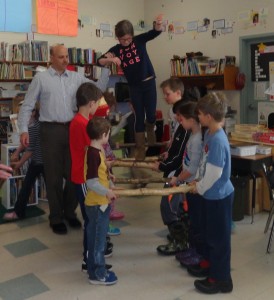
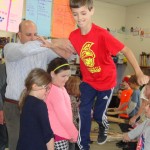
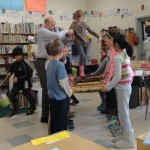 Our book clubs have started. Children have calendars and know what chapters they are responsible for reading by our meeting date next week. Some of the children are bring their books home. You may want to ask them (or remind them) if they are reading for their book club at home.
Our book clubs have started. Children have calendars and know what chapters they are responsible for reading by our meeting date next week. Some of the children are bring their books home. You may want to ask them (or remind them) if they are reading for their book club at home.- We have been learning the formation of the capitals in cursive. We’ve learned the first nine letters and the kids are feeling excited about being able to write more and more in cursive.
- As of yesterday, Eben had collected 5 wonders in his town. We are enjoying The Seven Wonders of Sassafras Springs and are looking forward to seeing if we can discover any wonder for ourselves in North Hampton.
- Next week, Caleb’s grandfather is coming to school to share what he does with the 3rd grade. He is a state police officer and part of the K9 unit. He’ll be doing a demonstration of us as he works with his dog.
 Dillan had four ten dollar bills. Her older brother, Laird, has seven five dollar bills. They combine their money to buy a gift for their mother that costs $58.95. How much change will they receive?
Dillan had four ten dollar bills. Her older brother, Laird, has seven five dollar bills. They combine their money to buy a gift for their mother that costs $58.95. How much change will they receive?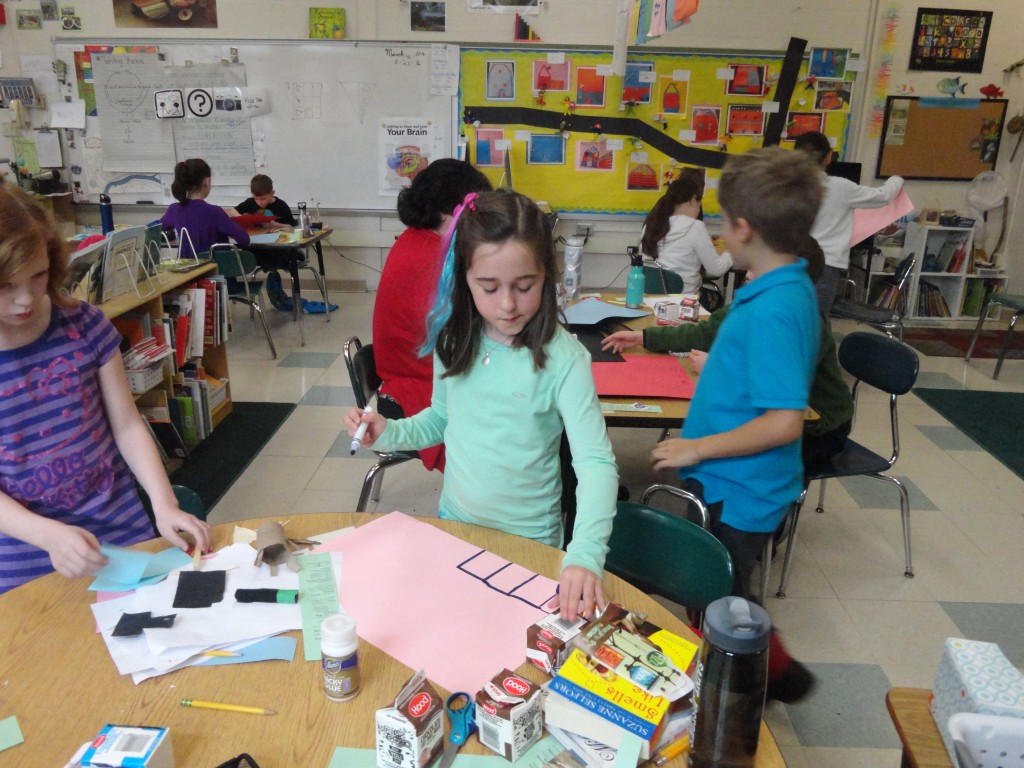 Yikes! You can tell it has been a busy week. I’m writing our newsletter and I don’t have new photographs (I’ll update the post later on today so you can see our work – come back again.) We’ve been doing lots of reading and writing. We’ve been reflecting on learning accomplished in the first two thirds of the year and are setting goals for further accomplishments during the remaining third. Book groups have continued, along with observations of change. We’re building a 3-D map of Sassafras Springs. There’s a lot going on in 3E.
Yikes! You can tell it has been a busy week. I’m writing our newsletter and I don’t have new photographs (I’ll update the post later on today so you can see our work – come back again.) We’ve been doing lots of reading and writing. We’ve been reflecting on learning accomplished in the first two thirds of the year and are setting goals for further accomplishments during the remaining third. Book groups have continued, along with observations of change. We’re building a 3-D map of Sassafras Springs. There’s a lot going on in 3E.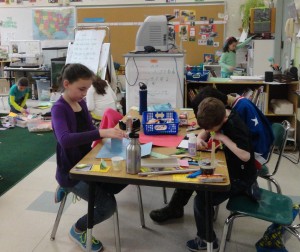 We’ve been asking ourselves what is it that we would like to accomplish in the remaining months of third grade. We are considered our present accomplishments and began wondering about what would still like to do. The list of thing our class has already accomplished is a rather long one. It was surprising and rewarding to see. We are looking forward to presenting our learning to families in student led conferences and portfolio shares at the end of the school year. What are our hopes and dreams – we know they’ll only happen if we make mindful choses and consider how our actions affect those around us.
We’ve been asking ourselves what is it that we would like to accomplish in the remaining months of third grade. We are considered our present accomplishments and began wondering about what would still like to do. The list of thing our class has already accomplished is a rather long one. It was surprising and rewarding to see. We are looking forward to presenting our learning to families in student led conferences and portfolio shares at the end of the school year. What are our hopes and dreams – we know they’ll only happen if we make mindful choses and consider how our actions affect those around us.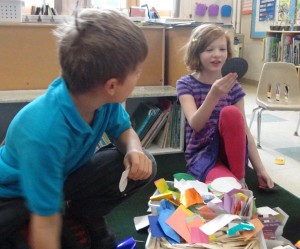 This week we further are map reading skills with Mr. Caron. The class worked in teams to read maps and locate battleship pegs hidden throughout the downstairs hall. The class had to keep their maps real so they could read and follow them to get to the correct spot. They also had to share responsibilities; sometimes taking the lead and other times following the lead of others. It was nice to see how well the teams did with this and how satisfying it was when each team knew they were making great choices.
This week we further are map reading skills with Mr. Caron. The class worked in teams to read maps and locate battleship pegs hidden throughout the downstairs hall. The class had to keep their maps real so they could read and follow them to get to the correct spot. They also had to share responsibilities; sometimes taking the lead and other times following the lead of others. It was nice to see how well the teams did with this and how satisfying it was when each team knew they were making great choices.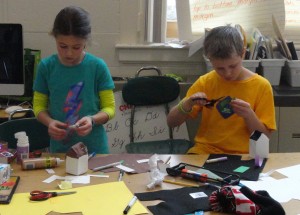 This week we began our work with fractions. We know that a fraction is part of a whole. We have explored fractions by dividing groups into smaller groups – labeling groups of classmates “5 of 16 or 5/16 are wearing stripes.” We are exploring the notion of “fair share.” We explored equivalent fractions. We saw that 1/2=2/4=3/6=4/8. We will be working with geoboards and pattern blocks to develop this understanding by exploring congruent eighths and finding all the ways a hexagon can be built. Each student will be making a set of fraction bars. With them we will explore the relationship between denominators. Children can see how knowing multiplication helps in seeing how amounts are related. For example 6/12 = 1/2 because 6×2=12. It was exciting to see and hear all the great math thinking going on with fractions this week.
This week we began our work with fractions. We know that a fraction is part of a whole. We have explored fractions by dividing groups into smaller groups – labeling groups of classmates “5 of 16 or 5/16 are wearing stripes.” We are exploring the notion of “fair share.” We explored equivalent fractions. We saw that 1/2=2/4=3/6=4/8. We will be working with geoboards and pattern blocks to develop this understanding by exploring congruent eighths and finding all the ways a hexagon can be built. Each student will be making a set of fraction bars. With them we will explore the relationship between denominators. Children can see how knowing multiplication helps in seeing how amounts are related. For example 6/12 = 1/2 because 6×2=12. It was exciting to see and hear all the great math thinking going on with fractions this week. Each day this week the children have been solving a wider variety of problems to help them discover what their most efficient strategies are. We are going to use these sheets as an anchor and see if we can explore and grow from hear. The problems, as you will see in work brought home, are written in many different formats. The children have been asked to record their math thinking in equations where possible. The problems have challenged the children to follow different lines of logic and work as efficiently as possible. For example if there were 98 balls in a shipment and each ball cast $2.00, how much would it cast to sent three shipments. With this problem some children chose to use the standard algorithm while others multiplied. Some found the total number of balls and then doubles while others found the cost of one shipment and tripled that. It was interesting for the class to see all three approaches came to the same solution. And each approach was evidence that the students had master new skills. It was a concrete example of learning that is not always easy to see.
Each day this week the children have been solving a wider variety of problems to help them discover what their most efficient strategies are. We are going to use these sheets as an anchor and see if we can explore and grow from hear. The problems, as you will see in work brought home, are written in many different formats. The children have been asked to record their math thinking in equations where possible. The problems have challenged the children to follow different lines of logic and work as efficiently as possible. For example if there were 98 balls in a shipment and each ball cast $2.00, how much would it cast to sent three shipments. With this problem some children chose to use the standard algorithm while others multiplied. Some found the total number of balls and then doubles while others found the cost of one shipment and tripled that. It was interesting for the class to see all three approaches came to the same solution. And each approach was evidence that the students had master new skills. It was a concrete example of learning that is not always easy to see.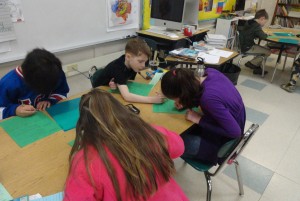 Today your child learned what his or her state is for the state project. We have begun our study of the United States. We are excited about this project because it combines so many different areas of study and it is fun! We do, as always need your help at home. In mid-April we’ll be sending home the guidelines for how you and your child can create a “float” for the Parade of the States. The children will be learning about their states and identifying that state’s ” wonders.” These wonders will be represented on a float/sandwich board to be presented in the Parade of the States. It is our plan that the children will have researched and identified their wonders by April vacation. Mrs. Haight is collaborating with us and has planned several units of study to coincide with this project. In school the children will be creating a collage of a state symbol, a model of a man-made structure and a representation of person important in their state. These will represent three of the wonders to be placed on their float or sandwich boards.
Today your child learned what his or her state is for the state project. We have begun our study of the United States. We are excited about this project because it combines so many different areas of study and it is fun! We do, as always need your help at home. In mid-April we’ll be sending home the guidelines for how you and your child can create a “float” for the Parade of the States. The children will be learning about their states and identifying that state’s ” wonders.” These wonders will be represented on a float/sandwich board to be presented in the Parade of the States. It is our plan that the children will have researched and identified their wonders by April vacation. Mrs. Haight is collaborating with us and has planned several units of study to coincide with this project. In school the children will be creating a collage of a state symbol, a model of a man-made structure and a representation of person important in their state. These will represent three of the wonders to be placed on their float or sandwich boards.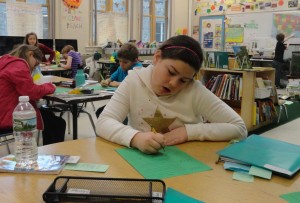 We will send home complete and clear guidelines for the float when the time comes. A couple of the children talked about beginning the building process right away. Please don’t do that yet. We have learned from past parades that we should slow the process down. We believe we have planned the project with enough time so that learning AND building fit together for a great event. (Be on the lookout for further parade information in next week’s homework folder.)
We will send home complete and clear guidelines for the float when the time comes. A couple of the children talked about beginning the building process right away. Please don’t do that yet. We have learned from past parades that we should slow the process down. We believe we have planned the project with enough time so that learning AND building fit together for a great event. (Be on the lookout for further parade information in next week’s homework folder.)
 Growing seeds is exciting. There are so many changes to observe and record.
Growing seeds is exciting. There are so many changes to observe and record. 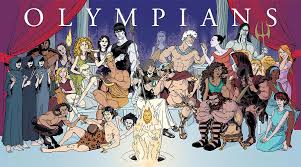

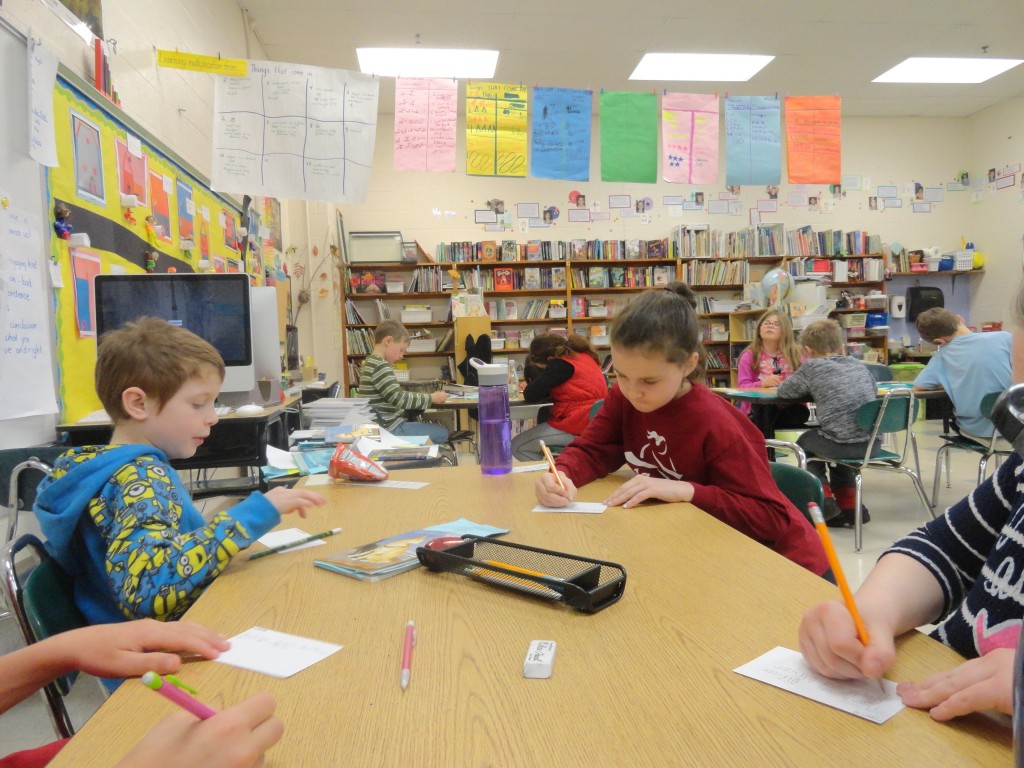 We’ve had a full and fun week. There are lots of different projects going on to inspire different ideas and wonderings.
We’ve had a full and fun week. There are lots of different projects going on to inspire different ideas and wonderings. This week we began two different growing projects. On Monday the children chose four different types of seeds to plant in a clear plastic cup. Some were flowers and others vegetables. Some seeds were large and others tiny. The first step of the experiment was to plant and then make a hypothesis – Which seed did they think would sprout first and why? Some children thought the largest seed would sprout first and others thought the smallest ones would. What they didn’t expect was that sprouting might have to do with roots, rather than the green shoot coming from the soil. It was exciting to begin noticing changes in just two days and to see the changes continue in each cup. In some cups marigolds sprouted first, while in others morning glories. Some beans seem to have sprouted but not zucchini or basil. We are wondering if that are factors beyond seed size that effect germination.
This week we began two different growing projects. On Monday the children chose four different types of seeds to plant in a clear plastic cup. Some were flowers and others vegetables. Some seeds were large and others tiny. The first step of the experiment was to plant and then make a hypothesis – Which seed did they think would sprout first and why? Some children thought the largest seed would sprout first and others thought the smallest ones would. What they didn’t expect was that sprouting might have to do with roots, rather than the green shoot coming from the soil. It was exciting to begin noticing changes in just two days and to see the changes continue in each cup. In some cups marigolds sprouted first, while in others morning glories. Some beans seem to have sprouted but not zucchini or basil. We are wondering if that are factors beyond seed size that effect germination.
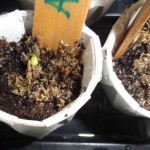 Our second growing project is planting broccoli as part of the school-wide square foot gardening project. We planted those seeds in small cups with a germination mat and grow light. We started them on Tuesday and on Thursday the first green shoot was showing. Our goal will be to have at least one broccoli plant growing in the greenhouse at the end of March. We hope we’ll have broccoli to share in the cafeteria by the end of school. We also hope to have broccoli plants to send home for you to enjoy all summer.
Our second growing project is planting broccoli as part of the school-wide square foot gardening project. We planted those seeds in small cups with a germination mat and grow light. We started them on Tuesday and on Thursday the first green shoot was showing. Our goal will be to have at least one broccoli plant growing in the greenhouse at the end of March. We hope we’ll have broccoli to share in the cafeteria by the end of school. We also hope to have broccoli plants to send home for you to enjoy all summer.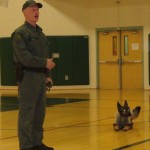
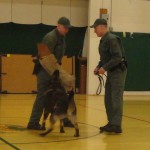 This week Caleb’s grandfather who is a State Police officer in the K9 unit came with another trooper, Officer Devlin, and did a demonstration for us. They shared their incredible dogs and talked to us about the kinds of things they do with their dogs to train them and work with them to keep us safe. Later that day we met Randy Pierce from Nashua. In his twenties, within two weeks time he lost his sight completely. His message was one about choices. He chose to dream big and never give up. He has chosen to believe that he can do anything he sets his mind to. He has climbed all the 4000-footers in NH. He hiked Mt. Kilimanjaro and run a Boston Marathon. Of course he has done this
This week Caleb’s grandfather who is a State Police officer in the K9 unit came with another trooper, Officer Devlin, and did a demonstration for us. They shared their incredible dogs and talked to us about the kinds of things they do with their dogs to train them and work with them to keep us safe. Later that day we met Randy Pierce from Nashua. In his twenties, within two weeks time he lost his sight completely. His message was one about choices. He chose to dream big and never give up. He has chosen to believe that he can do anything he sets his mind to. He has climbed all the 4000-footers in NH. He hiked Mt. Kilimanjaro and run a Boston Marathon. Of course he has done this  with the help of others. For him TEAM is an acronym – Together Everyone Achieves More. That seems like a great motto for our class. It is true. The better we work together to build a classroom community of support and collaboration the more we all learn.
with the help of others. For him TEAM is an acronym – Together Everyone Achieves More. That seems like a great motto for our class. It is true. The better we work together to build a classroom community of support and collaboration the more we all learn.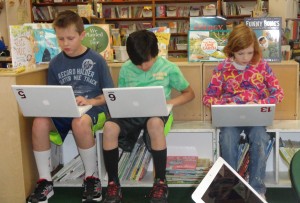
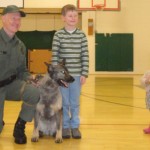
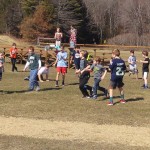
 It is hard to believe that nearly two thirds of this school year has passed. Next week report cards will be sent to you via email at the end of the week. It is good to stop and take notice of accomplishments and to see if we are attending to the goals that have been set earlier in the year. Third grade is the year where most children are developmentally able to accept responsibility for their own learning and learning behaviors. They realize they are making choices to focus and accept responsibility for their own learning.
It is hard to believe that nearly two thirds of this school year has passed. Next week report cards will be sent to you via email at the end of the week. It is good to stop and take notice of accomplishments and to see if we are attending to the goals that have been set earlier in the year. Third grade is the year where most children are developmentally able to accept responsibility for their own learning and learning behaviors. They realize they are making choices to focus and accept responsibility for their own learning. This week our social emotional learning focus has been taking responsibility for self-management. Building on author, Tim Green’s, message last Friday of always doing your best and being kind, we’ve revisited books about including everyone. Each Kindness by Jacqueline Woodson sparked conversation about regret and learning from mistakes. We reread Don’t Laugh At Me and explored the message of Horace and Morris, but Mostly Delores and wondered why sometimes we make clubs that keep others out. It is easy to notice how to be responsible when talking about book characters. We are working to notice how we can each be responsible for ourselves in our everyday interactions. We’ve been exploring way to be mindful and to take that extra second to reflect rather than react. “Is it the right thing, at the right time, for me and the people I am with?” I can see many of the children doing just that and I am proud of them. They are catching themselves at chatting, or making a distracting comment during a lesson or noticing when they’ve spent more time finding a place to read than reading.
This week our social emotional learning focus has been taking responsibility for self-management. Building on author, Tim Green’s, message last Friday of always doing your best and being kind, we’ve revisited books about including everyone. Each Kindness by Jacqueline Woodson sparked conversation about regret and learning from mistakes. We reread Don’t Laugh At Me and explored the message of Horace and Morris, but Mostly Delores and wondered why sometimes we make clubs that keep others out. It is easy to notice how to be responsible when talking about book characters. We are working to notice how we can each be responsible for ourselves in our everyday interactions. We’ve been exploring way to be mindful and to take that extra second to reflect rather than react. “Is it the right thing, at the right time, for me and the people I am with?” I can see many of the children doing just that and I am proud of them. They are catching themselves at chatting, or making a distracting comment during a lesson or noticing when they’ve spent more time finding a place to read than reading.

 This week our challenge with Mr. Caron required focused teamwork and true awareness of self-control and self-management. The class rose to the occasion – everyone was able to complete the challenge. There was a real sense of pride and accomplishment in the room because everyone had made choices to stay serious and to care for each other as they walked across the sticks held as a ladder in the air.
This week our challenge with Mr. Caron required focused teamwork and true awareness of self-control and self-management. The class rose to the occasion – everyone was able to complete the challenge. There was a real sense of pride and accomplishment in the room because everyone had made choices to stay serious and to care for each other as they walked across the sticks held as a ladder in the air. We complete our third round of fact checks. We’ve not been focusing on fact work as much in the classroom as we were in the fall. For many of the children scores have remained the same or gone down slightly. Games and some of the eboard links offer repetition and the practice needed to make fact knowledge automatic. Thank you for your weekly help with this. I know we’ll be on our game for the remainder of the year and doing the best we can.
We complete our third round of fact checks. We’ve not been focusing on fact work as much in the classroom as we were in the fall. For many of the children scores have remained the same or gone down slightly. Games and some of the eboard links offer repetition and the practice needed to make fact knowledge automatic. Thank you for your weekly help with this. I know we’ll be on our game for the remainder of the year and doing the best we can.

 Our book clubs have started. Children have calendars and know what chapters they are responsible for reading by our meeting date next week. Some of the children are bring their books home. You may want to ask them (or remind them) if they are reading for their book club at home.
Our book clubs have started. Children have calendars and know what chapters they are responsible for reading by our meeting date next week. Some of the children are bring their books home. You may want to ask them (or remind them) if they are reading for their book club at home.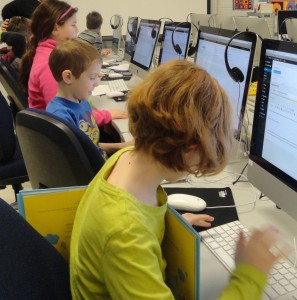 It sounds like everyone had a wonderful vacation whether you went far away or stayed at home. It is always nice to have a break in the usual routine. It is surprising to me as I sit to write to you that we’ve only been back in school for five days. Already we have begun some new projects and are moving forward learning new strategies for becoming more mindful and reflective.
It sounds like everyone had a wonderful vacation whether you went far away or stayed at home. It is always nice to have a break in the usual routine. It is surprising to me as I sit to write to you that we’ve only been back in school for five days. Already we have begun some new projects and are moving forward learning new strategies for becoming more mindful and reflective.

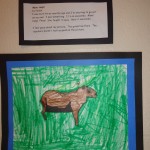 One time that we are specifically trying to pay attention to our inner voice is during artist-writers’ workshop. We are trying to stay quiet and think about all the things we are wishing to say out loud. Sometimes this talk bubbles out, but mostly the children are thinking about how they are dealing with excitement when the work is going well or even better than expected or frustrations when the work isn’t coming out as expected or hoped.
One time that we are specifically trying to pay attention to our inner voice is during artist-writers’ workshop. We are trying to stay quiet and think about all the things we are wishing to say out loud. Sometimes this talk bubbles out, but mostly the children are thinking about how they are dealing with excitement when the work is going well or even better than expected or frustrations when the work isn’t coming out as expected or hoped.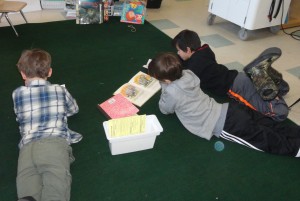 The children are keeping track of their understanding as we read The Seven Wonders of Sassafras Springs by Betty Birney. The children take notes and make sketches as they listen. At the end of each reading, they are asked to think about what they author most wants us to remember or think about. They are forming this into a sentence, then focusing even closer with a phrase and finally zooming in even closer with a word.
The children are keeping track of their understanding as we read The Seven Wonders of Sassafras Springs by Betty Birney. The children take notes and make sketches as they listen. At the end of each reading, they are asked to think about what they author most wants us to remember or think about. They are forming this into a sentence, then focusing even closer with a phrase and finally zooming in even closer with a word.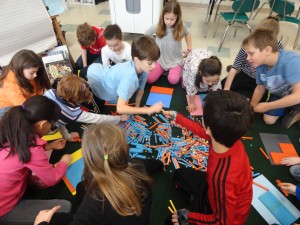 We continue to work with place value and
We continue to work with place value and